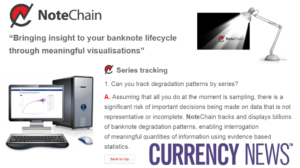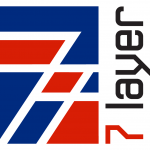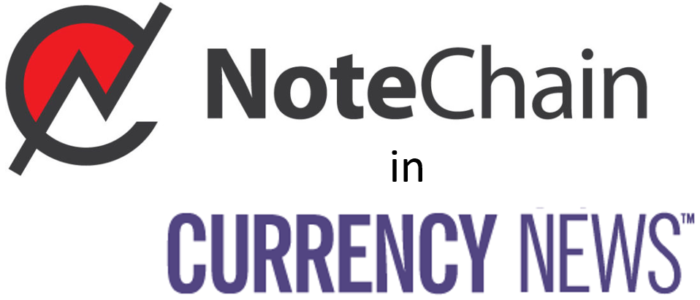7 Layer Solutions – Software Focused on Cash Cycle Efficiency
Comment: Here is the article written by Currency News showcasing us and NoteChain™ and featuring in the May 2017 edition.
To kick off a periodic series of features in Currency News on different technologies and systems that are creating a more efficient cash cycle, in January we focused on NamSys and the smart safe revolution. In this issue, we take a look at the software that sits behind cash logistics, and the benefits it offers, from 7 Layer Solutions.
Cash logistics refers to the manner in which cash is produced, stored, issued, circulated and destroyed, and should not be an uncoordinated or disjointed process.
Central banks distribute new and destroy unfit cash; the public obtains cash from, and recycles cash to, bank branches, ATMs, shops, restaurants; and involved in this cash circulation are CIT companies and cash centres, either commercial or belonging to the central bank or a mixture of the two depending on the central bank’s outsourcing policy. The cash centres are generally bulk processing locations receiving, checking, storing and repacking cash for distribution via a CIT company.
Efficient Passage Critical
Needless to say, the efficient passage of cash between all these players is critical and the digital revolution offers the opportunity to transform the sector. One company that specialises in the creation of software application development projects for the sector is 7 Layer Solutions, which was founded in 1999 by its Managing Director, Lee Maisner, and which has undertaken outsourced development work for banks and CIT companies, as well as global suppliers of cash processing and vault management systems.
The company has built its business by ‘applying technology meaningfully to real world cash logistics problems’. Its prime tools are strategic and operational analysis, system modelling, technology audits and cost benefit models. In its 18 years in the industry it has implemented systems that have integrated hardware, materials handling technologies and automation, and track and trace.
Its model is to partner with customer-facing companies to produce their unique vault and cash management software solutions, as well as undertaking projects for them.
Most of these customers remain confidential , but one is Tellermate -a leading provider of cash counters, intelligent till drawers and retail solutions. The two companies are combining their expertise to maximise their potential reach and further enhance the retail cash logistics process.
Another example is Innovia Systems, the system offering banknote authenticity and lifecycle mangement to commercial and central banks globally.
Key to 7 Layer’s business model is the interaction between the user community and the IT department.
Due to the classified and security conscious nature of the compny’s clients relationships, case study examples are difficult to evidence. But one example it can cite, albeit an early example, of the bespoke nature of its software solutions is the global dollar tracking system it developed for HSBC, who act as an agent for the US Federal Reserve for the stockholding and distribution of US dollars.
This involved a system for capturing shipment data using bar-coding and portable scanners (as a by-product of normal operation), which was uploaded to a database on the bank’s PC network, enabling a fast response to queries from immediately available data and reports.
Another is a note quality, fitness monitoring and benchmarking system for Intelligent Currency Solutions (ICS), designed to enable a central bank to assess the quality of notes in circulation.
The system, comprises a suite of vendor-independent detectors, software and support services. The detectors monitor note throughput and quality by denomination according to pre-determined parameters which cannot be altered by the machine suppliers or operators.
Data is linked via the Internet to a reporting package hosted on secure servers by ICS, which consolidate the data from each site, shift, machine, customer etc. The data can be accessed by the processing organisation and the banknote issuing authority.
Two benefits are the avoidance of arbitrary penalties from the subjective interpretation of standards and the issuing authority having a detailed knowledge of what is happening in the market.
Big Data – the NoteChain™ Solution
Given that the technology exists to store and access large volumes of data cost-effectively, significant benefits could be derived by tracking individual banknotes using their serial number and linking the output of all the fitness and authentication sensors.
Several central banks are already exploring this possibility, as is 7 Layer Solutions, with the development of NoteChain™ – its ‘next generation web platform flagship product- as a commercially available (Big Data) system.
What is surprising about NoteChain™ is the lack of data, since the results to queries are presented diagrammatically or graphically (the product’s strapline is ‘bringing insight to your banknote lifecycle through meaningful visualisations’).
Another insight into its capabilities is summarised in another comment – ‘the aim of NoteChain™ is not to answer the questions you have, but to make you ask the questions you didn’t know you should’.
Billions of Patterns
One example of what NoteChain™ can do is track individual banknotes to provide billions of banknote degradation patterns, enabling interrogation using evidenced based statistics (analytics). For example, do banknotes in some regions deteriorate more quickly than in others, and if so why? Do banknotes from each supplier perform equally well? Are the main reasons for destruction the same for each supplier? Can you forecast the impact of a change in clean note policy such as reducing soil tolerance?
 7 Layer Solutions claims NoteChain™ can help with all of these and many more, such as planning currency supply and demand and evaluating the life expectancy of a new series.
7 Layer Solutions claims NoteChain™ can help with all of these and many more, such as planning currency supply and demand and evaluating the life expectancy of a new series.
The benefits will be greater if every machine in the entire cash cycle can read the serial number of a banknote and is linked to the system. Given the increasing amount of recycling outside of cash centres using small machines (including recycling ATMs), this may not be possible for cost or practical reasons. But a great deal of valuable information will still be available if every fitness sorting machine records a banknote’s condition each time it is sorted.
Case studies indicating the net cost savings of software-based cash management systems were, until recently, difficult to obtain, but this has changed as more implementation studies have been concluded and reported.
Cost savings of at least 20% are generally the norm, but many believe there is much more to come with the advent of Big Data analytics.
Taken from May Currency News 2017


Comments are closed.